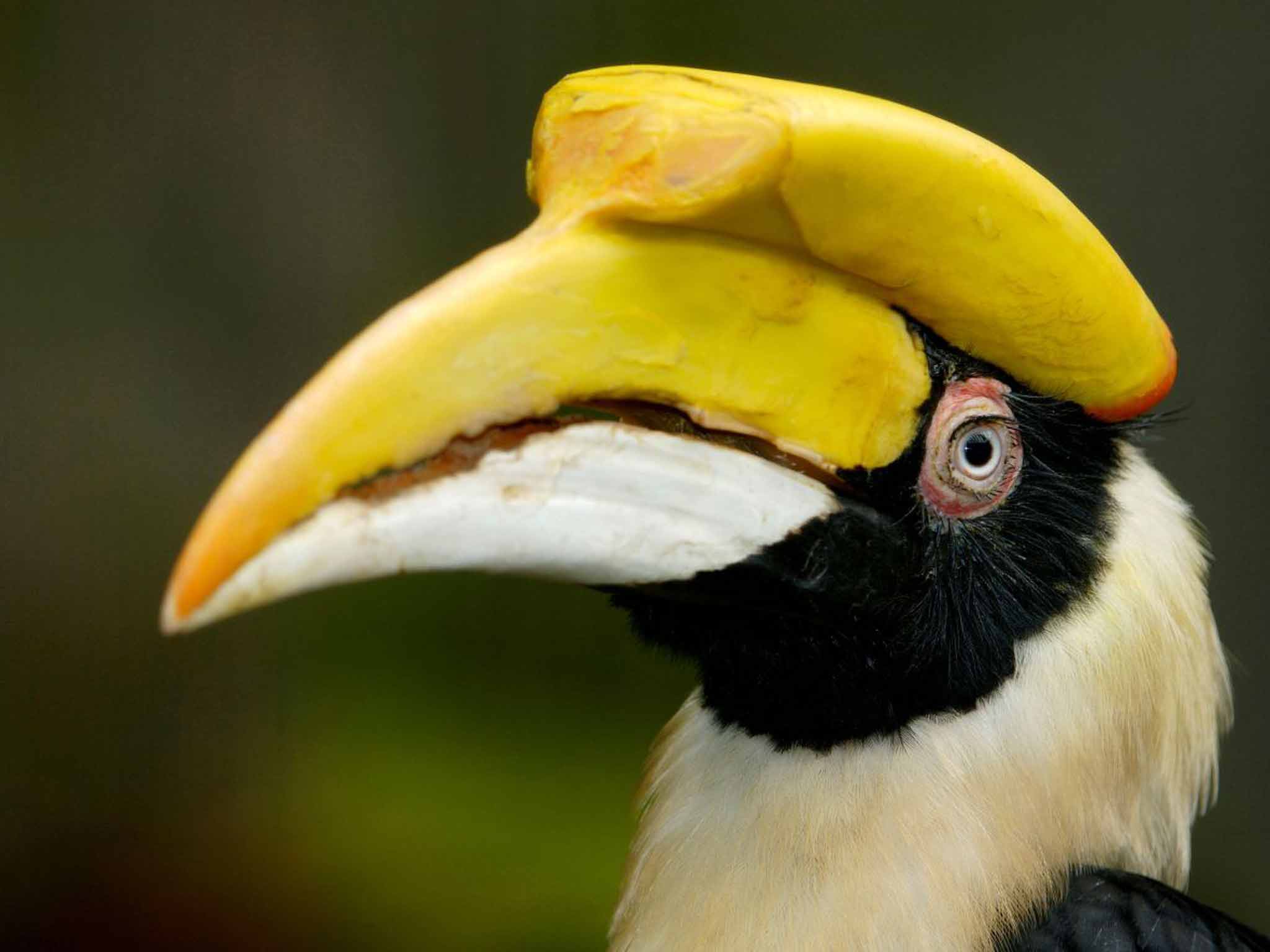Great Indian hornbill: Time to remember the power and beauty of nature
Spotting this extraordinary bird is not easy, but with spring comes the opportunity to witness a fascinating part of its behaviour

Your support helps us to tell the story
From reproductive rights to climate change to Big Tech, The Independent is on the ground when the story is developing. Whether it's investigating the financials of Elon Musk's pro-Trump PAC or producing our latest documentary, 'The A Word', which shines a light on the American women fighting for reproductive rights, we know how important it is to parse out the facts from the messaging.
At such a critical moment in US history, we need reporters on the ground. Your donation allows us to keep sending journalists to speak to both sides of the story.
The Independent is trusted by Americans across the entire political spectrum. And unlike many other quality news outlets, we choose not to lock Americans out of our reporting and analysis with paywalls. We believe quality journalism should be available to everyone, paid for by those who can afford it.
Your support makes all the difference.The Western Ghats of India are home to one of the world's greatest tropical rainforests and a staggering number of floral and faunal species, which is somewhat confounding when you consider the 400 million people who also live here. Somehow, some of the most biodiverse wildlife on the planet manages to survive among a fragmented landscape of forests, plantations and villages.
Of the 508 bird species in these mountains, perhaps the most bizarre and spectacular is the great Indian hornbill – an oversized explosion of colours and shapes that shouldn't work but does. Spotting this extraordinary bird is not easy, but with spring comes the nesting season, and an opportunity not only to observe the male hornbill for extended periods, but also to witness a fascinating part of this bird's behaviour.
On a recent visit, I set off at 5am for an hour-long drive through mosaic-patterned tea plantations towards a coffee plantation to the west of the village of Valparai. Because coffee needs shade, native trees and scrub are encouraged to grow among the coffee bushes, which in turn encourage wildlife. So, the scene when I arrived was reminiscent of a wild forest, its dusky pallet turning pink in the morning light.
An enormous, disinterested gaur – an Indian bison – was grazing amid the coffee as I walked quietly to a tall tree with a tell-tale hollow at the fork of its main branches. There was a small opening, impossible for a hornbill to fit through, but for eight weeks a female hornbill had been incubating an egg inside. With the help of her mate, she had gradually barricaded herself in using her droppings, with the remaining gap small enough to discourage any hungry cobras or lizards. Incredibly, she would remain crammed inside this hollow for another eight weeks, with the male responsible for feeding his family.
I waited patiently, nibbling the green peppercorns that grow on the vines entwining tall Umbrella Trees – quite a fiery kick at 6am on an empty stomach. A pair of Malabar grey hornbills, which mustn't yet have found their hollow, flew above as if to herald what I'd come for. The otherworldly sound of enormous feathered paddles beating through the air sent a shiver down my spine.
Finally, a male hornbill appeared and landed at the nest opening, his claws somehow allowing his formidable mass to perch almost daintily on his vertical landing strip. He opened his beak and, with an awkward stretch of his neck, began to regurgitate a fig. Only then did I see a flash of the female's yellow bill appear at the entrance to the nest. The male gently lowered his gift into the hole and she disappeared. He regurgitated and presented a beetle, and finally a bat. Fifteen minutes passed, and with an impressive take-off he swept though the trees. I gawped, speechless, at this splendid display in a man-made landscape – a striking reminder of nature's resilience and ability to adapt.
Liz Bonnin present's BBC2's 'Stargazing Live', which is available on iPlayer
Join our commenting forum
Join thought-provoking conversations, follow other Independent readers and see their replies
Comments